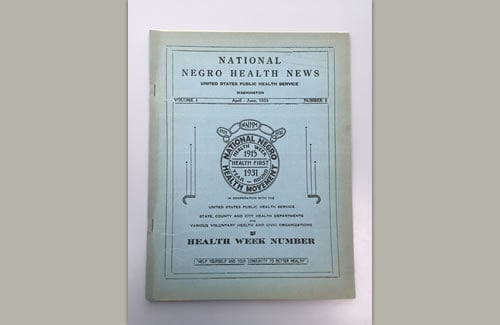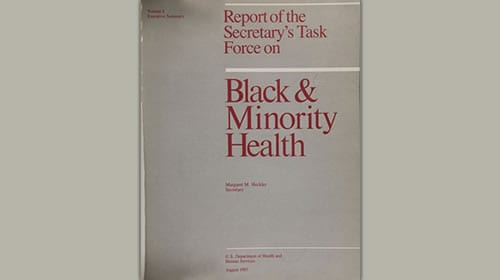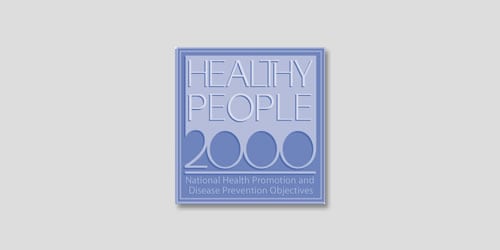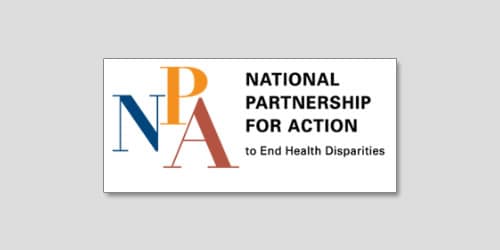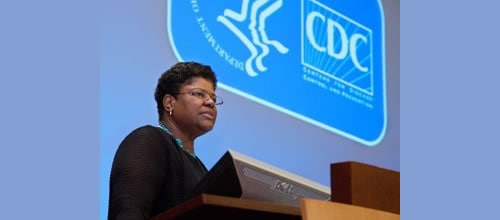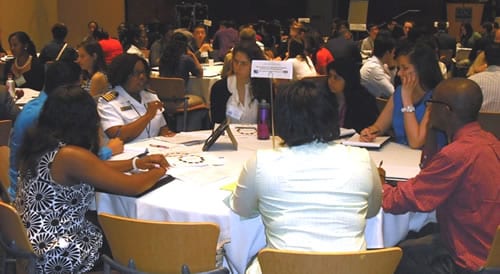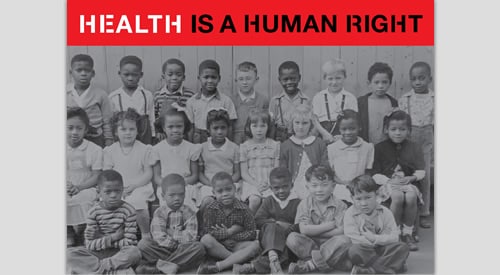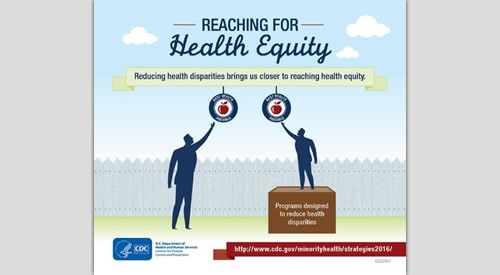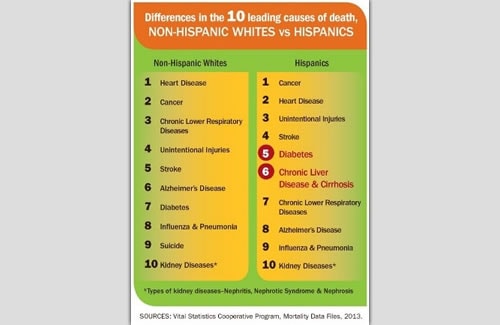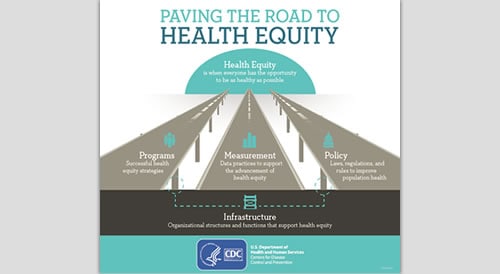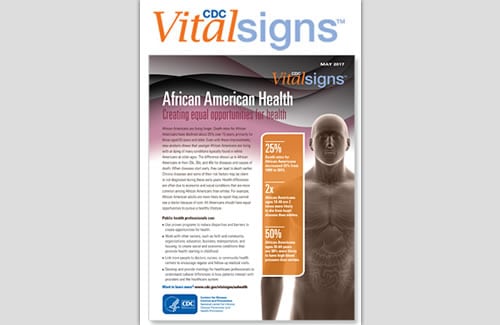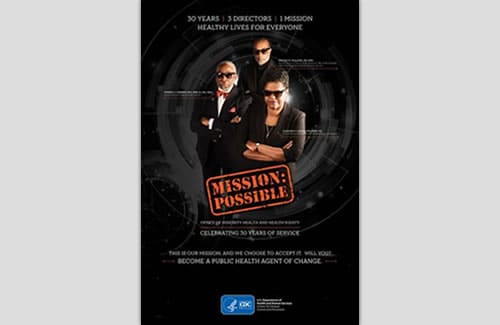Selected Achievements and Milestones in CDC’s Efforts to “Bake In” Health Equity

In 2023, CDC’s Office of Health Equity (proposed) celebrates 35 years of “baking in” health equity to our public health work. “Baking in” health equity means that health equity principles are foundational ingredients in our work, rather than separate ingredients we layer in, sprinkle on top, or serve on the side. When health equity is “baked in” to public health, the programs, science, and policies we develop are fundamentally different from the status quo and get to the root causes of preventable health disparities. Learn more about some of the achievements and milestones that have played a role in the CDC’s efforts to reduce health disparities and create healthy lives for everyone.
- Timelineicon
1915
Photo: National Negro Health News Volume 1, Number 2, NAID 7586131
National Negro Health Week begins in response to disturbing findings by the Tuskegee Institute that highlighted the poor health status of African Americans in the early part of the 20th Century. The U. S. Public Health Service instituted this in order to improve the health status of the black population by educating members of the community, providing greater access to healthcare, and encouraging an increased number of black professionals in the field of public health.
- Timelineicon
1985
Report of the Secretary’s Task Force on Black and Minority Health, known as the Heckler Report is released which documented the existence of health disparities among racial and ethnic minorities in the United States and called such disparities “an affront both to our ideals and to the ongoing genius of American medicine.”
- Timelineicon
1986
The U.S. Department of Health and Human Services Office of Minority Health (HHS OMH) was created and is one of the most significant outcomes of the 1985 Secretary’s Task Force Report on Black and Minority Health. The creation of the office lent itself to the emergence of minority health disparities as an issue of national significance.
- Timelineicon
1988
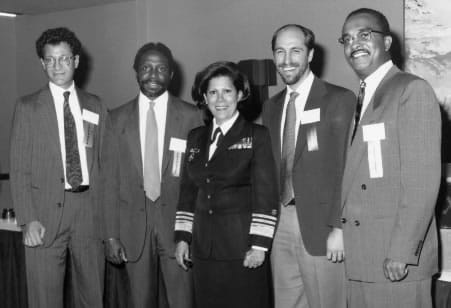
CDC’s Office of Minority Health was established under the direction of Dr. Rueben Warren.
- Timelineicon
1990
In 1990, HHS released Healthy People 2000: National Health Promotion and Disease Prevention Objectives, a strategy for improving the health of Americans by the end of the century, which was followed by Healthy People 2010 and Healthy People 2020.
- Timelineicon
1994

David Satcher, MD, PhD (CDC director, 1993-1998) establishes CDC’s Office of Women’s Health and designates women’s health issues as one of the agency’s four priority areas. This was in response to the Women’s Health Equity Act of 1993 and CDC’s 1993 Priorities for Women’s Health, a report detailing the agency’s efforts to address issues affecting the health of women. While bringing attention to women’s health, the report also highlighted the need for a coordinated approach to identify and respond to gaps in information pertaining to women’s health issues.
- Timelineicon
1998

Dr. Walter Williams becomes associate director of minority health at CDC.
- Timelineicon
2001
HHS establishes the National Standards for Culturally and Linguistically Appropriate Services in Health and Health Care (National CLAS Standards) which aims to improve health care quality and advance health equity by establishing a framework for organizations to serve the nation’s increasingly diverse communities.
- Timelineicon
2003
The Healthcare Equality and Accountability Act of 2003 passes to improve minority health and healthcare and eliminate racial and ethnic disparities in health and healthcare.
- Timelineicon
2005
CDC establishes the Health Disparities Subcommittee, which provides counsel to the CDC Director on CDC’s efforts to address health disparities in achieving the agency’s overarching health impact goals. This committee is important because it supports the development of specific health disparity objectives, performance indicators, and agency priorities and advocates for action on health disparities. This committee also provides guidance on opportunities for CDC to work with other sectors.
- Timelineicon
2006
The HHS Office of Minority Health convened more than 2,000 experts and leaders at the National Leadership Summit for Eliminating Racial and Ethnic Disparities. At this summit, community leaders, health equity experts and other stakeholders call for Social Determinants of Health-centered, community-driven, systems-oriented, cross-sector, and partnership-based approaches to eliminate health disparities.
- Timelineicon
2007
The National Leadership Summit for Eliminating Racial and Ethnic Disparities led to the development of the National Partnership for Action to End Health Disparities.
- Timelineicon
2010
In December 2010, HHS launched Healthy People 2020. Healthy People 2020 includes a new Foundation section which addresses several important health topics: General Health Status, Health-Related Quality of Life and Well-Being, Determinants of Health, and Disparities. An overarching goal of Healthy People 2020 is to achieve health equity, eliminate health disparities, and improve the health of all groups.
- Timelineicon
2010
CDC’s Office of Women’s Health is codified into law through United States Code Title 42.
- Timelineicon
2010
The Patient Protection and Affordable Care Act passes in March 2010, establishing Offices of Minority Health within six agencies of HHS, including CDC.
- Timelineicon
2011
CDC’s Office of Women’s Health joins OHE. OWH and OHE are aligned in their vision that all people should have a fair and just opportunity to attain their highest level of health. Both Offices advance health equity work for their populations of focus, which often overlap.
- Timelineicon
2011
Dr. Leandris Liburd becomes the director of what became known as CDC’s Office of Health Equity (OHE).
- Timelineicon
2011
CDC releases first periodic “CDC Health Disparities and Inequalities Report – United States, 2011” which provides analysis and reporting of the recent trends and ongoing variations in health disparities and inequalities in selected social and health indicators, both of which are important steps in encouraging actions and facilitating accountability to reduce modifiable disparities by using interventions that are effective and scalable.
- Timelineicon
2011
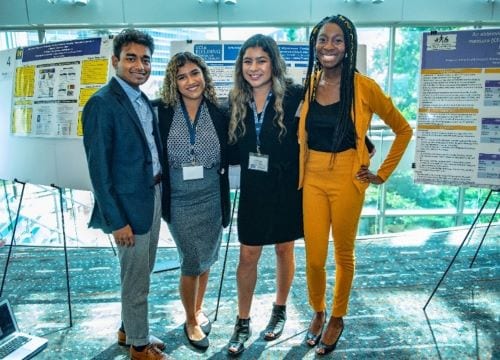
OHE establishes the CDC Undergraduate Public Health Scholars (CUPS) Program to support the public health workforce with the health equity competencies and diversity needed to effectively address health inequities.
- Timelineicon
2011
HHS launches the National Stakeholder Strategy for Achieving Health Equity and the HHS Action Plan to Reduce Racial and Ethnic Health Disparities.
- Timelineicon
2012
OHE launches the Health Equity Matters newsletter. This quarterly e-newsletter shares news, perspectives, and progress in the science and practice of health equity.
- Timelineicon
- Timelineicon
2012
OHE launches Conversations in Equity, a blog devoted to increasing awareness of health inequities and promoting national, state, and local efforts to reduce health disparities and achieve health equity.
- Timelineicon
2013
CDC releases second “CDC Health Disparities and Inequalities Report – United States, 2013.”
- Timelineicon
2013
OHE celebrates 25 years. As part of the commemoration, CDC’s David J. Sencer Museum exhibited Health Is a Human Right: Race and Place in America. The exhibit interprets minority health issues in the 20th and 21st centuries, and illustrates the social determinants of health through photographs, documents, data charts, books, public health promotional materials, media, and artifacts. The exhibit is available to view online through Georgia State University.
- Timelineicon
2014
OHE publishes an MMWR report, the “Strategies for Reducing Health Disparities – Selected CDC-Sponsored Interventions, United States, 2014.” This report includes selected interventions that reflect effective public health actions supported by CDC that are proven effective or show promise for reducing health disparities at the local or national levels. This is followed by a report in 2016 which highlights additional public health programs addressing health disparities.
- Timelineicon
2015
CDC releases first national study on Hispanic health risks and leading causes of death in the U.S.
- Timelineicon
2016
In collaboration with the Association of State and Territorial Health Officials, CDC published a special supplement to the Journal of Public Health Management & Practice focusing on health equity.
- Timelineicon
2017
CDC reports 25 percent drop in African-American death rate in African American Health Vital Signs.
- Timelineicon
2017
CDC’s Office of Women’s Health launches the annual Women’s Health Research and Practice Series (WHRAPS), which focuses on risk factors and conditions that disproportionately affect women and girls across the life course. During WHRAPS, OWH collaborates with internal and external subject matter experts to discuss social determinants of health and disparities in women’s physical, mental, and social functioning. Each WHRAPS focuses on a different topic area; previous topics have included ageism and quality of life among women (2017), built environment and women’s health (2021), menstrual health and hygiene (2022), and more.
- Timelineicon
2018
In 2018 the Office of Health Equity (OHE) celebrates 30 years of service. Since 1988, CDC has focused on reducing health disparities and ensuring a culturally competent public health workforce. The theme for the 30th anniversary commemoration is Mission: Possible. We believe “healthy lives for everyone” is possible and a goal that resonates in public health. Read more about addressing the needs of vulnerable populations during disasters.
- Timelineicon
2019
CDC’s Office of Women’s Health celebrates 25 years of service. OWH promotes public health research, evidence-based programs, policies, and strategies to improve the health and well-being of women and girls around the world.
- Timelineicon
2020
CDC’s COVID-19 response added a Chief Health Equity Officer (CHEO) Unit, a first for any response. The CHEO Unit’s role is to provide an all-of-response approach to identifying and addressing health disparities. The CHEO Unit developed CDC’s COVID-19 Health Equity Strategy, and a COVID-19 response health equity style guide that eventually became the Health Equity Guiding Principles for Inclusive Communication.
- Timelineicon
2021
CDC Director, Dr. Rochelle Walensky, declares racism a public health threat that directly affects the well-being of millions of people in the United States. CDC launched a website, Racism and Health, to serve as a hub for the agency’s efforts and a catalyst for greater education and dialogue around these critical issues.
- Timelineicon
2021
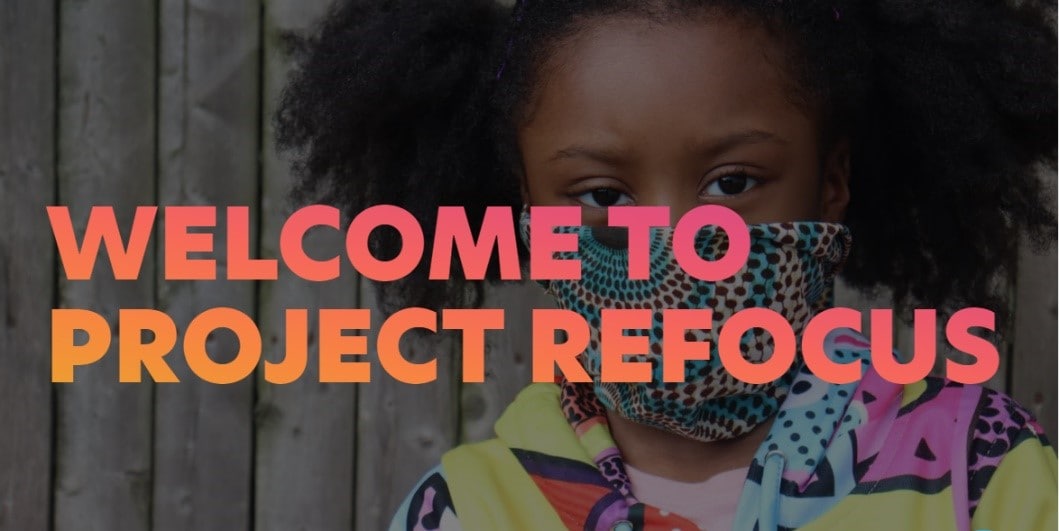
The COVID-19 pandemic illustrates the need for public health data, tools and actionable frameworks that reach disproportionally affected, historically marginalized and/or racialized populations during crises. Project REFOCUS is conceptualized as an applied socioecological surveillance, community-informed and data-to-action approach to address these challenges and leads the way for ongoing OHE projects to build community-engaged data-to-action and monitoring systems (Note: Project REFOCUS is in phase 2 ending in 2023).
- Timelineicon
2021

CDC establishes a new CORE Health Equity Science Intervention Strategy, which resolves to create comprehensive health equity science, optimize interventions, reinforce existing partnerships and create new ones, and enhance our workforce engagement.
- Timelineicon
2021
The Health Equity in Action web page is launched to showcase the CDC-funded COVID-19 projects that prioritize populations disproportionately impacted by COVID-19. The page has since expanded to include a broad range of health equity projects and initiatives among community-based partners.
- Timelineicon
2022
U.S. Congress renames the CDC Undergraduate Public Health Scholars (CUPS) Program the CDC John R. Lewis Undergraduate Public Health Scholars Program, as tribute to the legacy of Congressman John Lewis, a fervent supporter of CDC and lifelong champion of health equity. Funding is awarded to a record number of institutions including, for the first time, a Tribal Health Board. This program and the Dr. James A. Ferguson Emerging Infectious Diseases Graduate Fellowship program aim to increase public health workforce diversity and prepare the next generation of public health leaders.
- Timelineicon
2023
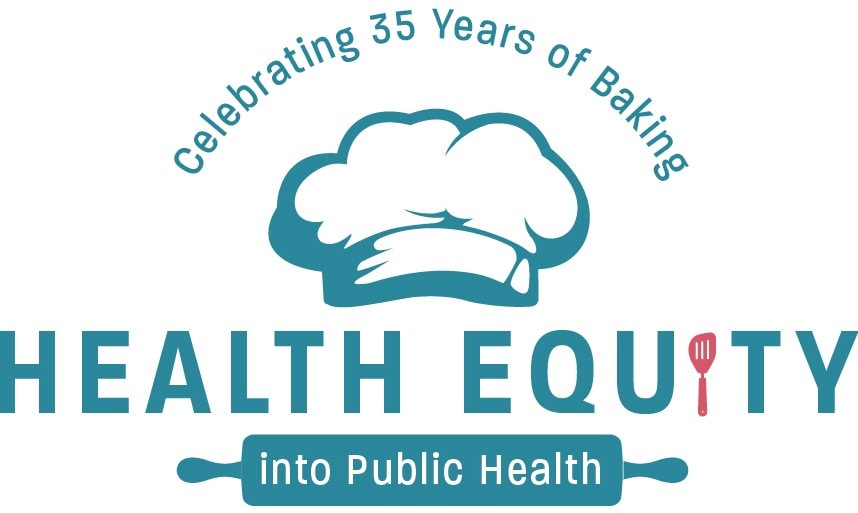
OHE celebrates 35 years of service, or “baking” health equity into our work at CDC. “Baking in” health equity means that health equity principles are foundational ingredients in our work, rather than separate ingredients we layer in, sprinkle on top, or serve on the side.
- Timelineicon
2023
CDC prioritizes health equity as a part of CDC Moving Forward and OHE moves to a new office – the Office of Health Equity (proposed) – within the CDC Office of the Director. This new CDC organization will allow OHE to lead the way in integrating health equity principles across CDC.
